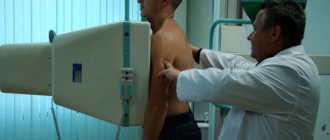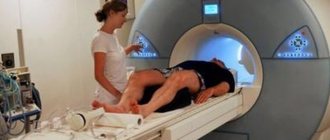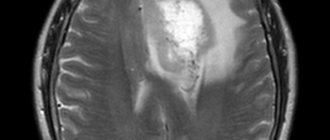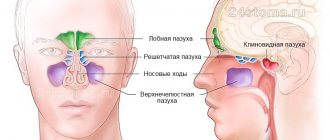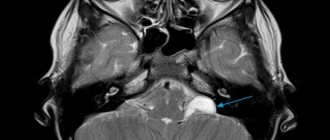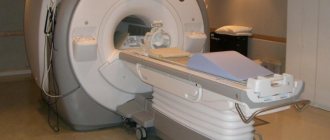Fluorography is a medical examination of the chest organs. It is performed using x-rays that are passed through the patient's body. The rays are reflected from tissues (organs, bones) and produce a visible black and white image on film or screen.
During this procedure, the body experiences a certain load due to x-ray radiation. Therefore, this procedure is considered harmful and is often not recommended.
Related article: Are your lungs okay? Who needs fluorography
What is FG
Until this method was introduced, fluoroscopy (where organs are viewed on a screen while exposing the patient to X-rays) was used throughout the world to detect early chest disease.
Fluorography is one of the methods for examining the chest organs, which uses x-ray irradiation. The point of the examination is to take a photo of the visible image on a fluorescent screen, which is formed as a result of the passage of X-rays through the patient's body and due to the varying degrees of absorption by their organs and tissues. The method can be used not only for the chest organs, but this is its most common application. Other bodies include:
- bony skeleton of the chest;
- ribs;
- thoracic spine;
- lungs;
- mediastinal organs.
The procedure can reveal some pathologies in the early stages of development. Diseases that can be diagnosed during fluorography:
- different forms of tuberculosis;
- lungs' cancer;
- sarcoidosis;
- pneumonia, pneumonia;
- chronic lung diseases;
- mediastinal diseases.
Also, based on the results of this procedure, the doctor can suggest heart pathologies, and then refer you for a consultation with a cardiologist.
The radiation dose to patients during fluorography using new equipment has decreased several times compared to the radiation dose received using traditional equipment. It is about 0.3 mSv, while the permitted radiation dose for preventive studies is 1 mSv.
The possibilities have also increased: the doctor can enlarge some areas if he suspects any abnormalities; The image quality has improved.
How often is the procedure allowed?
Some groups of citizens must undergo mandatory 1-2 fluorography examinations per year: military personnel, citizens with chronic diseases, persons without permanent residence.
Indications
Fluorography is recommended for preventive purposes once every 2 years for the following categories of patients:
- over 16 years old;
- patients in a clinic or other medical institutions, if there has been no prior examination;
- people living with a pregnant woman or small children;
- military personnel and HIV-infected people.
In cases where it is necessary to resort to an examination of the chest organs, the first mandatory procedure on the list is fluorography.

Contraindications
There are no contraindications that would completely prohibit this procedure.
However, fluorography is not recommended in the following situations:
- the patient's condition does not allow him to be in an upright position;
- claustrophobia in the patient;
- pregnancy in the early stages (fluorography is safe only after the 2nd trimester, when the fetus has already formed vital organs);
- the period of breastfeeding (if research is still necessary, then it is worth expressing milk, and feeding the baby only with the milk that is produced afterwards);
- childhood (this procedure can be harmful to a weak body, and the resulting radiation can weaken the immune system, which will increase the likelihood of viral and infectious diseases).
How dangerous is fluorography?
Today, almost all medical examinations include an X-ray examination of the chest organs, and in some cases also the skeletal system and mammary glands. Quite a lot has been said about the benefits of fluorography. This procedure is intended primarily for screening tuberculosis and lung tumors. It is also actively used in mammology - it helps to detect the presence of tumors in the mammary glands.
The main advantage of fluorography is the ability to identify all these serious diseases in the early stages. Advanced forms of breast cancer or tuberculosis significantly complicate their treatment, and in some cases make it completely impossible. I don’t think it’s worth talking about the consequences of this - they can even lead to death.
However, despite all the obvious advantages, X-ray procedures still involve ionizing radiation, which is harmful to the body. In our country, the memory of Chernobyl is still alive, and therefore people are afraid of any “radiation” like fire, which is why they often ignore medical examinations. So, after all, how dangerous is fluorography?
Our doctors chose, as they say, “the path of least evil.” Yes, radiation is potentially dangerous to our body. But with the help of small doses it is possible to prevent the development of serious diseases. Sometimes poison becomes medicine. It's all about quantity.
A one-time procedure for conventional film fluorography is approximately 0.5 mSv (millisievert). A film X-ray irradiates the body a little less – at a level of 0.3 mSv. Computed tomography is the most dangerous - during this procedure the patient receives about 11 millisieverts. And finally, modern digital fluorography is the safest, its radiation level is about 0.05 mSv.
If we talk about the permissible limits of gamma radiation, the maximum single dose is about 100 millisivets. More intense radiation can cause health problems. Radiation of one sievert (1000 millisieverts) leads to cancer in five cases out of a hundred, and a dose of five units is fatal.
Experts from the American Institute of Radiology say that a single dose of gamma radiation with an intensity of less than 5 mSv is acceptable even for pregnant women and does not in any way affect the development of the child.
Based on all this, we see that fluorography cannot be called dangerous if you undergo medical examinations no more often than recommended - once a year. And for those who still have not lost faith in the harmlessness of this procedure, there is digital fluorography, which irradiates the body at a minimal level.
Can fluorography be done if you have a cold or during pregnancy?
Sometimes you have to go for an examination during ARVI and when you have a cough, then the question arises whether fluorography can be performed for such diseases. If there is no severe cough, sputum, or fever, then it is acceptable to come to the clinic with snot to undergo fluorography.
It is better not to ignore such cold pathologies, since it is possible that the examination will show, for example, an increase in the pulmonary pattern, which may require further more detailed analysis.
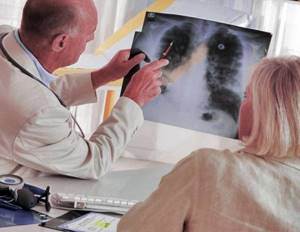
For a cold, this procedure can help identify tuberculosis, which sometimes occurs under the guise of bronchitis with an endless dry or wet cough.
Therefore, undergoing fluorography for a cold is not only possible, but also desirable to exclude pathologies, especially if an antibiotic does not relieve pain.
This is true?
This is partly true. The fact is that X-ray radiation is one of many to which the human body is exposed throughout life. On average, a person receives a dose of 2-3 mSv per year. It is summed up from cosmic radiation (solar and cosmic rays), radiation from natural radionuclides (soil, air, water) and radiation from artificial radionuclides (nuclear energy, nuclear explosions).
The recommended annual effective dose is 1 mSv. When conducting film fluorography (old technology), the radiation dose is 0.5-0.8 mSv, and when performing digital fluorography (new technology), it does not exceed 0.1 mSv.
Thus, fluorography using digital equipment once a year turns out to be practically harmless. But most clinics use film machines, which give a lower-quality image, and also a radiation dose that can be equal to what a person receives in a year.
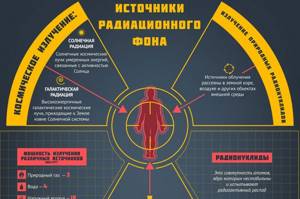
Natural radiation and its effects on humans. Infographics Read more
Ayur expert: In what cases can they be forced to undergo fluorography?
February 8, 2021
Recently, the Federal Bailiff Service in the Samara region reported a case where, through the court and with the help of bailiffs, a man who was dynamically registered at a drug treatment clinic was required to undergo a fluorographic examination. The statement notes that the resident of Samara “through his behavior created a danger of spreading the infection” and could infect family members and others. As a result, the issue had to be resolved through the court - it ordered the man to undergo fluorography and submit the results to a drug treatment clinic. There was no need to force the patient to be taken for examination - the bailiffs informed him that fluorography had to be done within five days, and otherwise he would be brought to administrative responsibility for failure to comply with court requirements. Member of the Russian Bar Association Dmitry Uvarov
told Izvestia that in Russia, undergoing fluorography is a voluntary event, but there is an order of the Ministry of Health dated March 21, 2021 No. 124n “On approval of the procedure and timing of preventive medical examinations of citizens in order to detect tuberculosis.”
It states for whom this procedure is mandatory. “For example, there are a number of professions that require individuals to undergo fluorography,” Uvarov noted. — These are professions that involve constant contact with people or food products (for example, employees of educational and medical institutions, kindergartens, transport companies or the catering industry), their representatives must be examined once a year. State of effect: tuberculosis bacilli train immunity to COVID-19 A new explanation has emerged for the low mortality rate from coronavirus in some countries. In addition, there is a federal law “On preventing the spread of tuberculosis in the Russian Federation,” according to which anti-tuberculosis care can be provided compulsorily to those citizens who who have an active form of tuberculosis. “Patients with contagious forms of tuberculosis who repeatedly violate the sanitary and anti-epidemic regime or deliberately evade examination to identify tuberculosis or treat tuberculosis, based on court decisions, are hospitalized in specialized medical anti-tuberculosis organizations for mandatory examination and treatment,” Uvarov noted. — The decision on hospitalization is made by the court at the location of the medical anti-tuberculosis organization in which the patient with tuberculosis is under dispensary observation. According to him, patients with open tuberculosis who evade treatment can be punished under Articles 236 of the Criminal Code of the Russian Federation and 6.3 of the Administrative Code - both relate to violations of sanitary and epidemiological rules. State of effect: tuberculosis bacilli train immunity to COVID-19 A new explanation has emerged for the low mortality rate from coronavirus in some countries. In addition, there is a federal law “On preventing the spread of tuberculosis in the Russian Federation,” according to which anti-tuberculosis care can be provided compulsorily to those citizens who who have an active form of tuberculosis. “Patients with contagious forms of tuberculosis who repeatedly violate the sanitary and anti-epidemic regime or deliberately evade examination to identify tuberculosis or treat tuberculosis, based on court decisions, are hospitalized in specialized medical anti-tuberculosis organizations for mandatory examination and treatment,” Uvarov noted. — The decision on hospitalization is made by the court at the location of the medical anti-tuberculosis organization in which the patient with tuberculosis is under dispensary observation. According to him, patients with open tuberculosis who evade treatment can be punished under Articles 236 of the Criminal Code of the Russian Federation and 6.3 of the Administrative Code - both relate to violations of sanitary and epidemiological rules. But it is practically impossible to force a healthy person to undergo fluorography. In Russia, there is a different method: an examination is required when visiting a clinic. Maria Plekhanova, Deputy Chief Physician for Scientific and Clinical Work at the Moscow Regional Clinical Tuberculosis Dispensary, notes: among those who have not been examined for more than two years, the risk of detecting tuberculosis is higher than among those who do it in a timely manner. “If a person does not go to the clinic for many years, does not work anywhere, no one knows about him, then it is quite difficult to force him to undergo an examination,” she noted. According to the order of the Ministry of Health, adults should be examined once every two years if the overall incidence rate of tuberculosis in the region is less than 40 cases per 100 thousand population, and once a year - if the overall incidence rate of tuberculosis in the region is more than 40 cases per 100 thousand population. Children should be examined annually, regardless of region (using the Mantoux test or Diaskintest). Many people need to have fluorography done twice a year: for example, all HIV-infected people, maternity ward workers, prisoners and those just released from prison, and so on. Nonsense medicine: tuberculosis will be treated without side neuroeffects The medicine has already passed a series of preclinical trials A little confused Russia is among 30 countries with a heavy burden of tuberculosis, but in recent years the situation has become much better. The pandemic may spoil it a little. “Russia has very good rates of decline in morbidity, and last year WHO representatives told us that if everything was as good as this, we would be removed from the 30 countries with the highest burden of tuberculosis,” a phthisiatrician who asked not to be named told Izvestia . — But in any case, we will remain in the “low class” for multidrug-resistant tuberculosis (a disease that is resistant to traditional drugs that cure tuberculosis. — Note from Izvestia). According to her, when the pandemic began, services working with tuberculosis were “a little confused.” “Less attention has been paid to tuberculosis, especially in the first six months; the number of preventive examinations has decreased,” she said. — During the pandemic, there was even a very serious meeting at which we were told: have you forgotten what happened in the 1990s? And the people rallied, because we know what happens when you loosen your grip. The phthisiatrician notes that in the first months of the pandemic, the coverage of fluorographic examinations in some regions was 20–30%, while the national average over the past year was about 68%. Director of the Novosibirsk Research Institute of Tuberculosis Natalia Stavitskaya
confirms: in the spring of 2021, planned medical care and preventive medical examinations were stopped - and all this may in the future also affect the incidence of tuberculosis.
“We expect that in the near future there may be an increase in the incidence of tuberculosis, including a possible short-term increase in mortality from tuberculosis,” she told Izvestia. — Problems with identifying patients during a pandemic in the near future may lead to an increase in the number of people with advanced forms of tuberculosis - in the later stages. This may also affect mortality rates. In the third generation: in Russia they are creating their own vaccine against pneumococcus Scientists plan to develop a drug with minimal side effects According to her, there will not be a sharp increase in incidence, as in the 1990s, but a short-term deterioration in the epidemic situation for tuberculosis in the next two to three years is possible . Pandemic leveling
However, the negative impact of the pandemic on the diagnosis of tuberculosis - especially in the first half of 2021 - remains to be studied.
Data for all regions has not yet been collected, but statistics for the past year appear to be much better than in previous years. “According to preliminary data, at the end of 2021, 34.57 cases per 100 thousand population were registered in Russia, which is 15.8% lower than last year,” Rospotrebnadzor told Izvestia. The head of the Center for Monitoring the Counteraction to the Spread of Tuberculosis, Olga Nechaeva
, confirms that in the first half of the year there was a sharp reduction in preventive examinations, with the exception of CT scans, fewer vaccinations were done, but over the summer many territories “began to catch up with plans for medical examinations.”
Source of hope: what awaits patients with SMA in 2021 A special fund should be involved in the treatment of children with orphan diseases. “We have now begun accepting annual reports from the regions, and it is clear that there will be a reduction in medical examinations by 10–15%,” she told Izvestia. “However, I believe that this decrease will not play a significant role this year; rather, detection in 2022 may have an impact.” In her opinion, COVID-19 in the near future in Russia will not contribute to an increase in tuberculosis incidence rates, since all the negative effects of the pandemic were neutralized by it. “There was a sharp reduction in contacts, while examination of the lungs using computed tomography increased,” Nechaeva said. — There were no reductions in the supply of anti-tuberculosis drugs; in addition, there was an expansion of hospital-replacement technologies - during the pandemic, hospitals at home appeared: in other words, anti-tuberculosis drugs were delivered to the patient at home. She added that due to closed borders there were not so many foreign citizens: in some regions, for example, Moscow, St. Petersburg, Krasnodar Territory, it was migrants who significantly influenced tuberculosis indicators. In addition, Nechaeva notes, the pandemic primarily affected those cities in which the situation with tuberculosis is the most favorable - Moscow, for example, where the incidence rate is low. “According to available data, if at the end of 2021 the mortality rate from tuberculosis in Russia was 5.1 cases per 100 thousand population, then this year it will be approximately 4.6,” Nechaeva noted. — Morbidity will decrease at an even faster rate than mortality from tuberculosis. But this will again be affected by the fact that there were fewer surveys. After 2021, everything will improve and return to its previous dynamics. Crazy about corona: delirium from COVID could lead to an epidemic of dementia Researchers are concerned that the pandemic could provoke an increase in the number of cases of dementia Natalia Stavitskaya believes that transferring citizens to remote work and introducing quarantine measures will not be a factor that will stop the spread of tuberculosis: apartment outbreaks the diseases still remained. Moreover, she noted, everyone began to discuss the symptoms of coronavirus, fearing the loss of smell, but did not pay attention to others. “But tuberculosis can occur under the guise of frequent colds and can develop gradually,” she says. — As experience shows, this is ignored by many patients at a fairly long initial stage of the disease. Resuscitation of vigilance Maria Plekhanova notes that in the Moscow region the coronavirus did not interfere with the diagnosis of tuberculosis. Moreover, the pandemic has another effect: people's interest in lung examinations has increased. “We see that patients react more calmly to the need for additional examinations, including radiation methods,” she noted. Natalia Stavitskaya also notes: the positive impact of the pandemic was a certain mobilization of forces and resources, “reanimation of vigilance,” including in the fight against tuberculosis. Elena Bogorodskaya
chief freelance phthisiatrist of the Moscow City Health Department , notes that in the capital over 12 months the number of cases and deaths from tuberculosis has not increased; in her opinion, it is too early to make forecasts for the next years, although so far the dynamics are positive. In Moscow, in general, everything is fine: according to her, the incidence in the capital over the past ten years has decreased three times. To obtain medications, families of patients are forced to go to court. While in the capital and the Moscow region there are no problems with the diagnosis and incidence of tuberculosis, in a number of regions there are still enough of them. Olga Nechaeva notes that tuberculosis is still quite common in Siberia, the Far East and the Urals. At the end of 2019, the ranking of regions in terms of tuberculosis incidence was headed by Chukotka, Tuva and the Kemerovo region. In Chukotka, the figures were 136.9 cases per 100 thousand population. For comparison: in Moscow - 22.6 at the end of 2021 (this is not the lowest in the country), and at the end of 2021, according to the Department of Health, 16.1 cases per 100 thousand population. A phthisiatrician, who asked not to use her name, also talks about problems with diagnostics; in the Arkhangelsk region, 42–43% were examined. Among the leaders he names the Voronezh region - there this figure does not fall below 80%. “But the national average has not yet reached Soviet figures - then it was 74–78%,” she says. “And if three quarters of the population are examined annually, this has a positive effect on the overall epidemic picture: there are very few people who have not been examined for several years. Meanwhile, the world fears the consequences of the pandemic, which will hinder the fight against tuberculosis. In the summer, specialists from the international organization Stop TB Partnership stated that because of it, 6.3 million additional people could become ill with tuberculosis by 2025. WHO also stated in October 2020 that successes in the fight against this disease could be jeopardized due to coronavirus.
All news

Source:
News
Reasons for mandatory tests
Deadly diseases that affect the pulmonary system may not show symptoms for a long time. Only at the moderate and severe stages of the pathology do shortness of breath, cough, weight loss and a state of general weakness appear. Regular checks allow you to promptly replace deviations and begin adequate treatment.
X-ray examinations are aimed at detecting cancerous tumors and tuberculosis. In the latter case, patients with initial forms of the disease are not dangerous to others, but with advanced forms they become carriers, infecting work colleagues, relatives and loved ones. One patient with open tuberculosis can infect up to 15 people.
The only reliable protection against pathology is a stable functioning immune system. In other cases, prognosis depends on the speed at which the disease is identified and the therapeutic measures taken. Doctors identify separate categories of people predisposed to tuberculosis:
- prone to colds - with a frequency of visits to the clinic exceeding 6 times per year;
- survivors of pneumonia (pneumonia);
- those under stress or after a serious nervous shock;
- those who refuse treatment and prefer to fight diseases on their own;
- regularly losing weight using strict diets.
Infection with a dangerous infection does not depend on social status and social status. Any person who has accidental contact with a carrier can become ill.
Ignoring annual procedures automatically puts patients at risk for later determinations of a latently developing pathological process. Malignant and benign neoplasms in the lungs, nearby bone tissues, and structural changes in the organ require timely detection and adequate therapy. In advanced cases, hope for recovery and survival prognosis tends to zero.
How often do you need to undergo fluorography and why?
Fluorography is an x-ray research method that is necessary to detect tuberculosis and malignant tumors of the lungs. The study also allows us to assess the condition of the patient’s heart, large arteries and lungs.
As a rule, with symptoms such as cough, shortness of breath and difficulty breathing, the patient is referred for an X-ray examination. In addition, this study is mandatory when undergoing medical examinations and preventive examinations.
This diagnosis does not require special preparation. The examination takes no more than 5 minutes and is absolutely painless. Fluorography is not recommended for pregnant women. Breastfeeding mothers are required to express milk after the examination.
How often should I undergo fluorography?
Based on Decree of the Government of the Russian Federation of December 25, 2001 N 892 ON THE IMPLEMENTATION OF THE FEDERAL LAW “ON PREVENTION OF THE SPREAD OF TUBERCULOSIS IN THE RUSSIAN FEDERATION,” preventive medical examinations (fluorography) of the population are aimed at the timely detection of tuberculosis. They are carried out in mass, group (according to epidemic indications) and individually in treatment and preventive institutions at the place of residence, work, service, study or detention in pre-trial detention centers and correctional institutions.
In a group setting, according to epidemic indications (regardless of the presence or absence of signs of tuberculosis), the following population groups are subject to preventive medical examinations in order to detect tuberculosis twice a year:
a) military personnel undergoing military service upon conscription;
b) workers of maternity hospitals (departments);
c) persons who are in close household or professional contact with sources of tuberculosis infection;
d) persons removed from dispensary registration in specialized treatment and preventive anti-tuberculosis institutions due to recovery - during the first 3 years after deregistration;
e) persons who have had tuberculosis and have residual changes in the lungs during the first 3 years from the moment the disease was diagnosed;
f) HIV-infected;
g) patients registered with drug treatment and psychiatric institutions;
h) persons released from pre-trial detention centers and correctional institutions - during the first 2 years after release;
i) persons under investigation held in pre-trial detention centers and convicts held in correctional institutions.
In a group setting, according to epidemic indications (regardless of the presence or absence of signs of tuberculosis), the following population groups are subject to preventive medical examinations in order to detect tuberculosis once a year:
a) persons:
patients with chronic nonspecific diseases of the respiratory system, gastrointestinal tract, and genitourinary system;
patients with diabetes mellitus;
receiving corticosteroid, radiation and cytostatic therapy;
b) persons belonging to social groups at high risk of tuberculosis:
without a fixed place of residence;
migrants, refugees, internally displaced persons;
living in stationary social service institutions and social assistance institutions for persons without a fixed place of residence and occupation;
c) employees:
social service institutions for children and adolescents;
medical and preventive, sanatorium, educational, health and sports institutions for children and adolescents.
On an individual (extraordinary) basis, preventive medical examinations in order to detect tuberculosis are subject to:
a) persons who applied to medical institutions for medical care with suspected tuberculosis;
b) persons living with pregnant women and newborns;
c) citizens conscripted for military service or entering military service under a contract;
d) persons diagnosed with HIV infection for the first time.
JSC Insurance has been operating since 1998. The number of insured people is more than 19 million people. Regional network - more than 660 units in 40 constituent entities of the Russian Federation. SOGAZ-Med carries out compulsory medical insurance activities: monitors the quality of service for the insured when receiving medical care in the compulsory medical insurance system, ensures the protection of the rights of insured citizens, restores the violated rights of citizens in pre-trial and judicial proceedings. In 2021, the Expert RA rating agency confirmed the rating of reliability and quality of insurance services at the level of “A++” (the highest level of reliability and quality of services within the compulsory medical insurance program on the applicable scale). For several years now, SOGAZ-Med has been assigned this high level of assessment.
Be healthy!
Rules for undergoing diagnostics
An unfavorable epidemiological situation requires mandatory fluorographic examination every 12 months. The sanitary and epidemiological rules of the Russian Federation specify that annual inspections are carried out when more than 60 cases are registered for every 100 thousand population.
The list of patients for whom examinations are provided twice a year is presented:
- conscripted military personnel;
- those who were in direct contact with tuberculosis patients;
- deregistered from the tuberculosis dispensary – the first 3 years;
- those who have had illnesses with residual effects in the lungs – for three years;
- HIV-infected;
- registered as narcotic drugs in the PND;
- those held in pre-trial detention centers, correctional institutions and those released from them - for the first 2 years;
- working with people under investigation and convicts.
Mandatory verification is carried out for persons who do not have a specific place of residence.
Fluorography: frequency of examination for different population groups
Fluorography: frequency of examination for different population groups
This method of examining the chest as fluorography is familiar to everyone. Patients of the Ozyorsk Central District Hospital can undergo a fluorographic examination either under the compulsory medical insurance policy, that is, free of charge, or on an extra-budgetary basis and without an appointment. This is a fast, informative and safe method of x-ray examination.
It differs from conventional x-rays in its low radiation exposure. The rays used in fluorography have less rigidity. The dose of radiation that the patient receives during such an examination is equal to that which can be “caught” by spending several days outside without a shirt under the hot spring sun. We will tell you which groups of the population are subject to periodic examinations, as well as the very frequency of fluorographic examinations.
Once a year, the following are examined: employees whose professional activities belong to decreed contingents in accordance with the list of Rospotrebnadzor.
- Patients with chronic nonspecific diseases of the respiratory system, gastrointestinal tract and genitourinary system; diabetes mellitus, gastric and duodenal ulcers, those with an operated stomach, mental illness, alcoholism, drug addiction, dust lung diseases, persons who have a hyperergic reaction to the Mantoux test with 2TE; persons receiving corticosteroid, radiation and cytostatic therapy.
- Persons belonging to social groups at high risk of tuberculosis (persons without a fixed place of residence, migrants, refugees, internally displaced persons).
- Persons living in stationary social service institutions and sanitary care (protection) institutions, including for persons without a specific place of residence and occupation.
- Persons with residual changes in the lungs and pleura of non-tuberculous etiology. —
- Persons living in dormitories.
- Students of secondary and higher educational institutions.
The following are examined twice a year: conscripted military personnel and employees of maternity hospitals (departments). Persons in contact with patients with active tuberculosis. Persons who have had tuberculosis and have residual changes in the lungs during the first 3 years from the moment the disease was diagnosed. Persons removed from dispensary registration in specialized treatment and preventive anti-tuberculosis institutions due to recovery - during the first 3 years after deregistration. Persons released from pre-trial detention centers and correctional institutions - within 2 years after release. Persons under investigation held in pre-trial detention centers and convicts held in correctional institutions. HIV-infected. Patients registered at the dispensary in drug treatment and psychiatric institutions.
Regardless of scheduled preventive examinations of various population groups, the following are subject to an extraordinary fluorographic examination : all persons over 15 years of age upon admission to the hospital and upon initial visit to the clinic this year. All persons over 15 years of age (permanent residents) upon entry to work and study (if the fluorographic examination is more than 6 months old). Persons admitted to children's hospitals to care for children (if the previous fluorographic examination was more than 6 months old). Those coming from other territories when entering study or work. Persons diagnosed with HIV infection for the first time. Persons from the environment of a pregnant woman and a newborn, a woman in the postpartum period, as well as persons from the environment of a child and adolescent with a tuberculin test. Adolescents conscripted for military service (if the fluorographic examination is more than 1 year old); cut out the fluorogram and attach it to the documents of the military registration and enlistment office).
Once every two years, the following are examined: persons who are not included in high-risk groups and do not belong to decreed contingents. The doctor, within 3 days from the moment of identifying signs indicating a possible tuberculosis disease in the examined person during a preventive medical examination, sends him to a specialized treatment and preventive anti-tuberculosis institution to complete the examination.
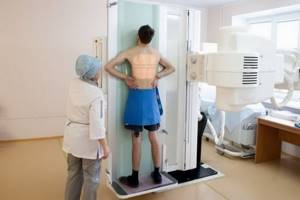
Read more: https://ftiza.su/perechen-grupp-naseleniya-podlezhashhih-periodicheskim-osmotram-i-periodichnost-provedeniya-flyuorograficheskih-osmotrov/
Facebook


